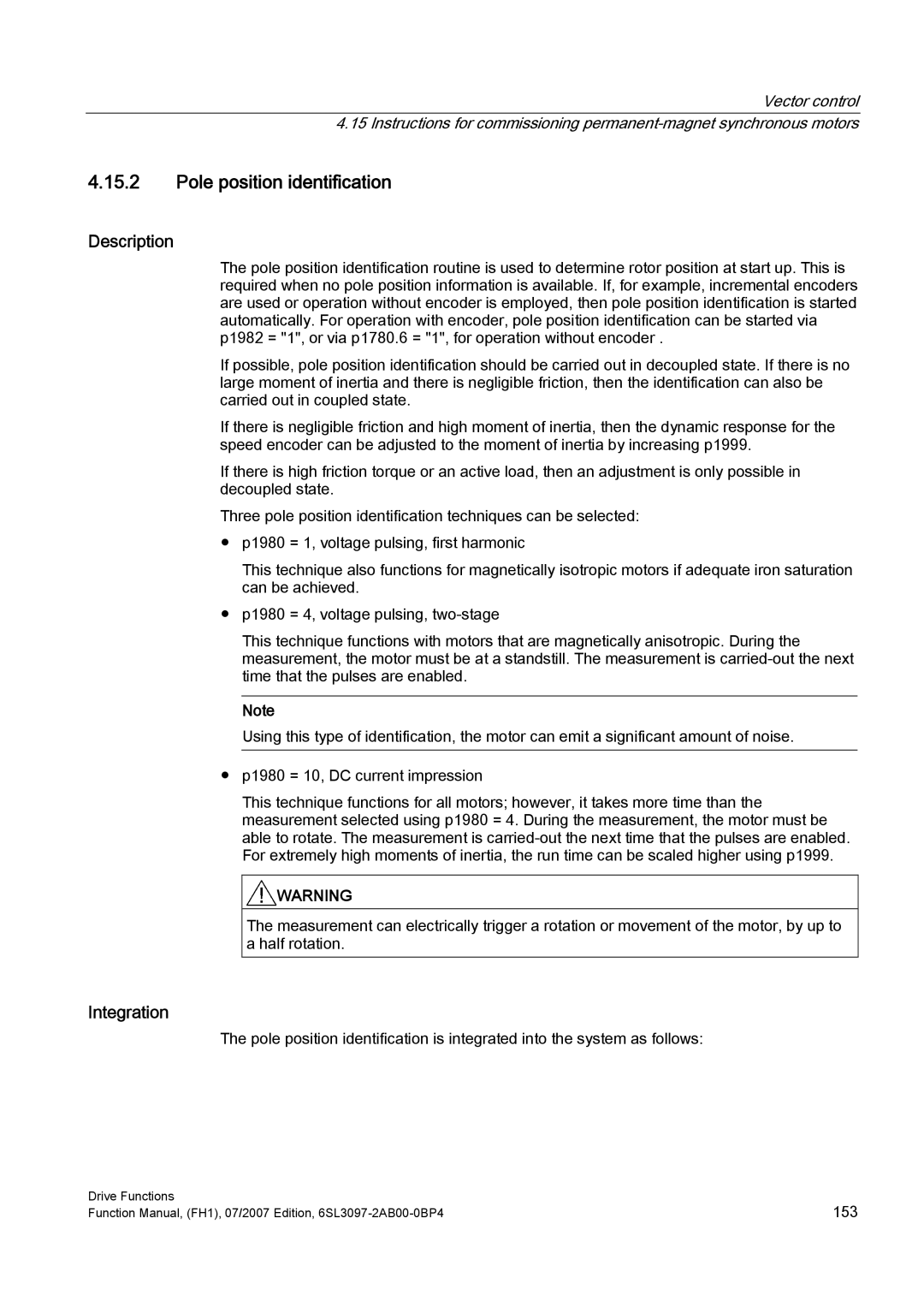
Vector control
4.15Instructions for commissioning
4.15.2Pole position identification
Description
The pole position identification routine is used to determine rotor position at start up. This is required when no pole position information is available. If, for example, incremental encoders are used or operation without encoder is employed, then pole position identification is started automatically. For operation with encoder, pole position identification can be started via p1982 = "1", or via p1780.6 = "1", for operation without encoder .
If possible, pole position identification should be carried out in decoupled state. If there is no large moment of inertia and there is negligible friction, then the identification can also be carried out in coupled state.
If there is negligible friction and high moment of inertia, then the dynamic response for the speed encoder can be adjusted to the moment of inertia by increasing p1999.
If there is high friction torque or an active load, then an adjustment is only possible in decoupled state.
Three pole position identification techniques can be selected:
●p1980 = 1, voltage pulsing, first harmonic
This technique also functions for magnetically isotropic motors if adequate iron saturation can be achieved.
●p1980 = 4, voltage pulsing,
This technique functions with motors that are magnetically anisotropic. During the measurement, the motor must be at a standstill. The measurement is
Note
Using this type of identification, the motor can emit a significant amount of noise.
●p1980 = 10, DC current impression
This technique functions for all motors; however, it takes more time than the measurement selected using p1980 = 4. During the measurement, the motor must be able to rotate. The measurement is
![]() WARNING
WARNING
The measurement can electrically trigger a rotation or movement of the motor, by up to a half rotation.
Integration
The pole position identification is integrated into the system as follows:
Drive Functions | 153 |
Function Manual, (FH1), 07/2007 Edition, |
